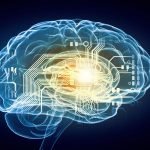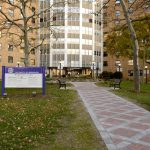Hyperbaric Oxygen Therapy
A Novel Treatment for the Aging Patient
Matthew Cavaiola, NMD, LAc
As a large percentage of the American population continues to reach older age, many of these individuals will experience a decline in quality of life and a concomitant progression of chronic illness. The incidence of many chronic and sometimes preventable diseases increases with age. These include cardiovascular disease, stroke, diabetes, cancer, arthritis, endocrine disorders, and dementia. Aging is a natural and inevitable part of life, but the progression of disease does not have to be. As naturopathic physicians, it is our duty to continue to seek out treatments that may be of benefit to prevent, slow the onset of, or reverse the aging process. While nutrition and lifestyle management and other naturopathic modalities will continue to be the cornerstones of how we treat our patients in the future, one treatment that has only recently garnered attention for its ability to assist in reducing disease and to slow aging is hyperbaric oxygen therapy (HBOT).
Hyperbaric Oxygen Therapy
HBOT is a treatment in which a person breathes in either 100% oxygen or ambient air, while exposed to increased atmospheric pressure. This takes place in a hyperbaric chamber – an enclosed unit that can either accommodate a single person (a mono-place chamber) or between 2 and 14 patients (a multi-place chamber). Pressures applied while in the chamber usually range from 1.3 to 3 atmospheres absolute (ATA). Any pressure above sea level, or 1 ATA, is considered to be hyperbaric. For ambient air chambers, the pressure forcing oxygen into the body is truly what performs the “magic” during this therapy. Chambers that are able to achieve higher pressures and deliver pure oxygen provide an advantage by increasing oxygen saturation and absorption throughout the body. Even chambers that are considered “mild” hyperbaric chambers, ie, those that apply a pressure between 1.3 and 1.5 ATA, are still widely recognized as a viable treatment option when chambers with a higher pressure are unavailable. Most mild hyperbaric oxygen chambers are found in standalone medical offices, such as in a naturopathic doctor’s office, while chambers that apply a pressure anywhere from 1.7 to 3 ATA are found mostly in hospital settings throughout the world.
The origins and development of hyperbaric medicine are closely tied to the history of diving medicine, and the first documented use of HBOT actually precedes the discovery of oxygen itself. In the 1600s, the British physician and priest, Nathaniel Henshaw, developed an air-tight room called a “domicilium,” in which variable climatic and pressure conditions could be produced, with pressure provided by a large pair of bellows. He stated that “In times of good health this domicilium is proposed as a good expedient to help digestion, to promote insensible respiration, to facilitate breathing and expectoration, and consequently, of excellent use for the prevention of most afflictions of the lungs.”1
Since Henshaw’s time, hyperbaric chambers certainly have come a long way. Advancements in hyperbaric medicine and clinical research in the field continue to demonstrate countless benefits of HBOT for patients. HBOT has traditionally been used primarily to treat cases of decompression sickness and has also shown phenomenal results in assisting in wound repair due to burns, diabetes, or crush injuries. More recently, HBOT has also shown promise as a standalone treatment for many other diseases and conditions. These include stroke and other cardiovascular diseases, Parkinson’s disease, multiple sclerosis, autism, chronic fatigue syndrome, fibromyalgia, Lyme disease, Crohn’s disease, ulcerative colitis, and cancer.
While HBOT’s role in preventing and treating the aforementioned diseases has been extensively studied, there is a dearth of literature explaining its capacity to treat the aging patient without any evident pathology – more for an “anti-aging” purpose. It can easily be argued that most aging patients who are seen by naturopathic physicians would like to have more energy or vitality, improve their memory and brain function, reduce inflammation and/or pain, and improve their circulation. HBOT certainly has the potential to benefit patients in each of these areas. The following sections will discuss HBOT’s role in energy production, cerebral perfusion, and inflammation reduction.
Energy Production
Within the human body, energy, in the form of ATP, is generated from the food that we eat on a daily basis. This takes place mostly in the mitochondria, sometimes dubbed the “energy powerhouse” of the cell. Inside the mitochondria, the Kreb’s citric acid cycle and the electron transport chain (ETC) help to produce some 30 molecules of ATP per glucose molecule ingested. This ATP alone constitutes the main cellular energy packets used for all life processes.2
More importantly, to generate ATP adequately, the ETC uses most of the oxygen that we inhale. As we age, however, our bodies become more hypoxic, lacking the vital oxygen that is necessary to perfuse mitochondria; this results in lower amounts of ATP generated.
It can stand to be reasoned that many cases of age-related fatigue and lowered vitality are a direct result of these hypoxic conditions and reduced mitochondrial energy-producing capability. Chronic fatigue syndrome (CFS), with a typical onset being later in life, is an illness characterized by medically unexplained fatigue lasting at least 6 months and accompanied by infectious, rheumatological, and/or neuropsychiatric symptoms. It has been demonstrated that individuals with CFS suffer from great mitochondrial dysfunction with the degree of dysfunction and severity of the illness being strongly correlated.2 Moreover, hypoxia has been shown to impair mitochondrial function and diminish ATP production in other disease states. Since only 0.3% of all inhaled oxygen is ultimately delivered to the mitochondria,3 increasing the oxygen delivery to the mitochondria by HBOT may actually improve mitochondrial function and improve age-related fatigue. In animal studies, HBOT (in comparison to room air pressure and oxygen levels) has been shown to increase the amount of work done by mitochondria, improve mitochondrial function after brain injury, and prevent mitochondrial deterioration.4
Despite its importance, mitochondrial dysfunction is only 1 plausible explanation for age-related fatigue. Nutritional, lifestyle, endocrinological and cardiovascular factors should also be considered to explain an aging person’s energy decline. With that being said, most patients can benefit from HBOT, and the therapy could be considered to help any degree of fatigue, from mild to even the most severe forms, seen in CFS.
Cerebral Perfusion
Undoubtedly, the brain is one of the most important vital organs in the human body. With increasing age, the brain’s weight and volume both decrease. Atrophy of the brain mostly involves the grey matter, which has been shown in research using computed tomography (CT) imaging. Subsequent to atrophy of the grey matter, cerebral blood flow has been reported to decline with advancing age.1 Restoring brain function is one of the many important goals of HBOT in aging patients. With improved brain function, many age-related symptoms such as memory decline, confusion, disorientation, dizziness, headaches, or tinnitus may be corrected. HBOT has also been used extensively over the last 50 years as a primary or adjunctive therapy, and in both experimental and clinical studies to treat stroke and other types of insults to the brain, such as encephalopathy, carbon monoxide poisoning, cerebral air embolism, and acute spinal cord injury. Unfortunately, it does not appear that patients with Alzheimer’s disease are responsive to HBOT.5
In the United States, there are more than 700 000 documented cases of stroke each year, with about 80% of these due to focal cerebral ischemia as a result of interruption of blood flow to brain tissue.6 During focal ischemia, the ischemic core is thought to be surrounded by an area that is viable, yet non-functioning, called an “ischemic penumbra.” Neuronal cells in this area might be salvaged with appropriately timed and adequate therapy.7 HBOT may restore function in areas of the brain that are hypoxic and primarily vascular in origin, even in cases with onset up to a decade prior to treatment. Single photon emission computed tomography (SPECT) scans are helpful in determining rates of blood perfusion and metabolic changes in regions impacted by stroke, and can provide prognostic clues before, during, and after HBOT therapy.5
There are many case reports documenting HBOT’s efficacy in improving brain function. One such case, reported by Dr Richard Neubauer, a pioneer in hyperbaric medicine, involved a 70-year-old woman who had a 1-year history of confusion, forgetfulness, agitation, and inability to live alone. A SPECT scan showed that the patient did not have Alzheimer’s disease but had hypoperfusion in the frontal and temporal lobes. After just 3 treatments, her SPECT scan had improved dramatically, and after just 20 treatments the patient returned to a perfectly normal lifestyle and work as a minister.5
Clearly, HBOT can help to treat and reverse damage caused by a variety of insults to the brain. It also has the potential to be a great adjunctive or standalone treatment in improving brain function in aging patients. Most research has documented the use of higher pressures in treating patients with recent stroke. The use of mild hyperbaric chambers (1.3-1.5 ATA) has also been reported to positively affect hypoxic or damaged brain tissue.
Inflammation
Inflammation is now widely regarded as the precursor to a wide array of diseases. Anti-inflammatory diets, restoring the gastrointestinal mucosal barrier in leaky gut, and improving the intestinal microbiome are all naturopathic cornerstones to help reduce inflammation. HBOT also has the potential to reverse inflammation and prevent disease. Inflammatory bowel disease is a chronic inflammatory disease of the GI tract characterized by chronic and recurrent ulcerations, and includes both Crohn’s disease and ulcerative colitis.8 Activated macrophages appear to play a key role in the disease process and produce inflammatory cytokines, including TNFα and interleukin (IL)-6 and IL-8. A recent meta-analysis of 19 studies demonstrated clinical improvement in both Crohn’s disease (78% of patients) and ulcerative colitis (100% of patients) after HBOT.8 Significant decreases in proinflammatory cytokines (IL-1, IL-6, TNFα) were also demonstrated in the patients with Crohn’s, and a decrease in IL-6 in ulcerative colitis patients undergoing HBOT.
Arthritis, another inflammatory disease, affects nearly 1 out of 5 adults in the United States. Individuals with arthritis suffer from great pain, disability, and decreased quality of life. Animal studies have demonstrated HBOT’s ability to significantly reduce joint inflammation and sensitivity to pain. HBOT was equally as effective as aspirin in reducing both parameters.9 The anti-inflammatory benefit seen in animal studies certainly proves hopeful for arthritis sufferers.
While IBD and arthritis are only 2 diseases with inflammation at their roots, HBOT should be considered to treat any inflammatory disease, commonly found in aging.
Potential Side Effects of HBOT
The benefits of HBOT are clearly numerous, and fortunately HBOT is considered a safe treatment for most people. One of the biggest concerns with HBOT is otic barotrauma. With heightened pressure in a hyperbaric chamber, this could lead to increased pressure and pain in the inner ear. The pain usually resolves once the chamber has completed its pressurization phase. In a mild hyperbaric chamber, this usually takes roughly 4-5 minutes. There have been instances where the pressure in the inner ear does not resolve, and to risk any further damage, the treatment is discontinued. Another potential risk is increased seizure activity in those who suffer from epilepsy. Although HBOT has been used to treat seizures, it may also activate a seizure. Absolute contraindications to receiving HBOT are individuals with compressive brain lesions, first trimester pregnancy, or patients with an active head cold. Other things to look out for with HBOT include reduced blood sugar in diabetics, pulmonary hyperexpansion, and a detox (or “die-off”) reaction.
Conclusion
Hyperbaric medicine is at the forefront of a growing trend by Americans seeking out alternative therapies to prevent and treat illness. As the US population continues to get a little older, HBOT certainly has the potential to provide a great boost to naturopathic doctors who wish to maximize clinical outcomes and help their patients have more energy, improve brain function, reduce inflammation, and feel and look better as they age.
 Matthew Cavaiola, NMD, LAc, is both a naturopathic medical doctor and licensed acupuncturist in the state of Arizona. Before graduating from SCNM, Dr Cavaiola received his Bachelors of Arts in biological sciences and a Masters of Science in human nutrition from the University of Delaware. He also received a Masters of Science in acupuncture from the Phoenix Institute of Herbal Medicine and Acupuncture. Dr Cavaiola is passionate about treating many chronic conditions associated with the aging process at the Phoenix Anti-Aging Clinic. He specializes in treating chronic illness and uses hormone replacement therapy, clinical nutrition, IV nutritional therapy, acupuncture, and hyperbaric oxygen to help his patients. Dr Cavaiola also enjoys supervising medical students at SCNM and is an adjunct professor at Rio Salado College where he teaches Introduction to Human Nutrition.
Matthew Cavaiola, NMD, LAc, is both a naturopathic medical doctor and licensed acupuncturist in the state of Arizona. Before graduating from SCNM, Dr Cavaiola received his Bachelors of Arts in biological sciences and a Masters of Science in human nutrition from the University of Delaware. He also received a Masters of Science in acupuncture from the Phoenix Institute of Herbal Medicine and Acupuncture. Dr Cavaiola is passionate about treating many chronic conditions associated with the aging process at the Phoenix Anti-Aging Clinic. He specializes in treating chronic illness and uses hormone replacement therapy, clinical nutrition, IV nutritional therapy, acupuncture, and hyperbaric oxygen to help his patients. Dr Cavaiola also enjoys supervising medical students at SCNM and is an adjunct professor at Rio Salado College where he teaches Introduction to Human Nutrition.
References:
- Jain KK. Textbook of Hyperbaric Medicine. Cambridge, MA: Hogrefe Publishing; 2009.
- Myhill S, Booth NE, McLaren-Howard J. Chronic fatigue syndrome and mitochondrial dysfunction. Int J Clin Exp Med. 2009;2(1):1-16.
- Lane N. Oxygen: The Molecule that made the World. New York, NY: Oxford University Press, Inc; 2002.
- Rossignol DA, Bradstreet JJ. Evidence of mitochondrial dysfunction in autism and implications for treatment. Am J Biochem Biotechnol. 2008;4(2):208-217.
- Neubauer RA, Yutsis PI. New Frontiers: Anti-Aging Properties of Hyperbaric Oxygen Therapy. Townsend Letter for Doctors & Patients. 1999;192:68-70.
- Faries PL, Chaer RA, Patel S, et al. Current management of extracranial carotid artery disease. Vasc Endovascular Surg. 2006;40(3):165-175.
- Zhang JH, Lo T, Mychaskiw G, Colohan A. Mechanisms of hyperbaric oxygen and neuroprotection in stroke. Pathophysiology. 2005;12(1):65-80.
- Rossignol DA. Hyperbaric oxygen treatment for inflammatory bowel disease: a systematic review and analysis. Med Gas Res. 2012;2(1):6-17.
- Wilson HD, Toepfer VE, Senapati AK, et al. Hyperbaric oxygen treatment is comparable to acetylsalicylic acid treatment in an animal model of arthritis. J Pain. 2007;8(12):924-930.










